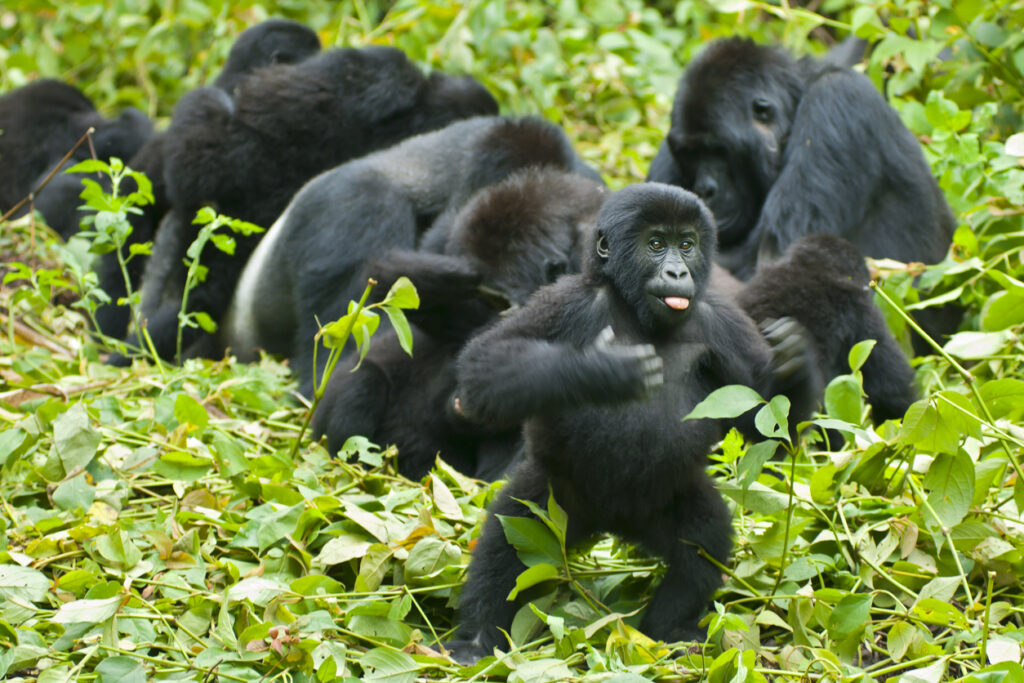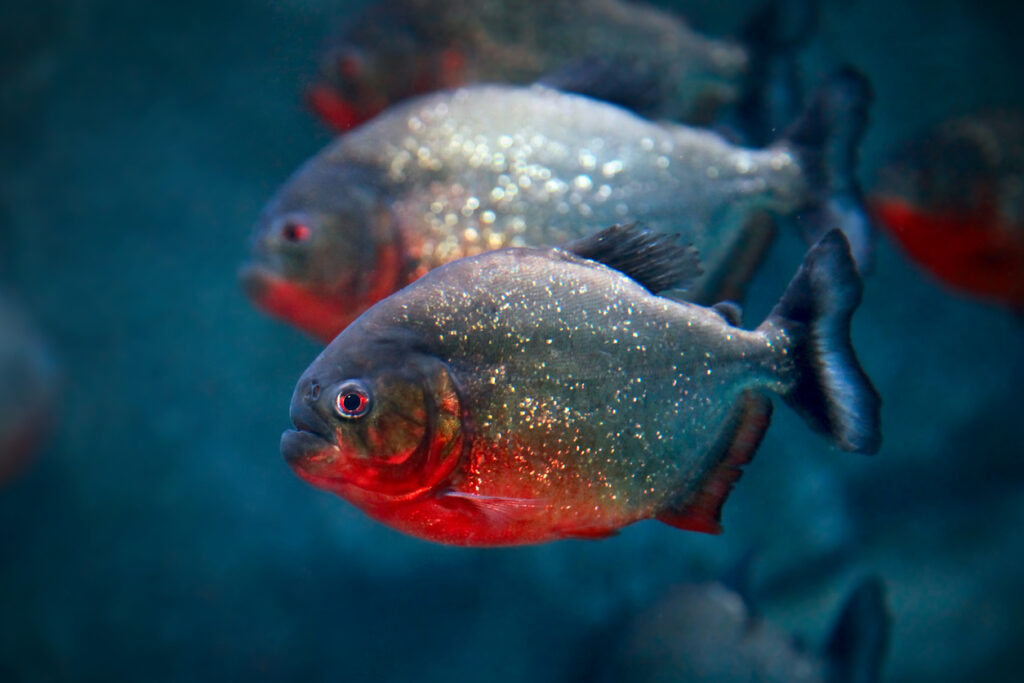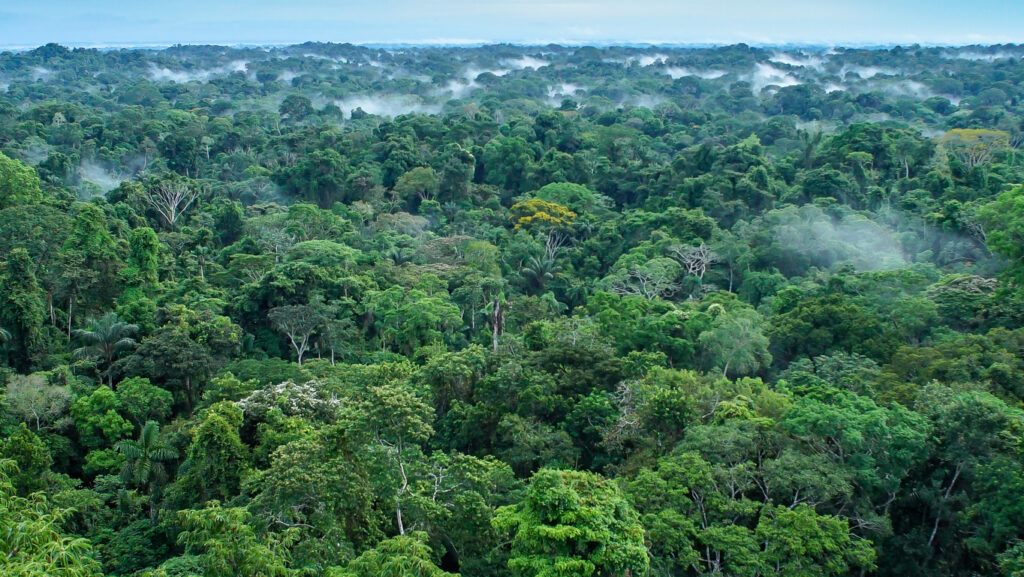Earth is home to the most diverse landscapes that we’re aware of anywhere in the universe, with a range of climates and wildlife, but no area is more diverse than the rainforests which are home to up to 50 million different species.
So, sit back, relax, and allow us to take you below the treeline to explore the mysterious world that lurks beneath the leaves.
What is a rainforest?
Rainforests differ from other environments because of a few factors. Rainforests are continuous expanses of trees that have moisture-dependent vegetation at their core with, crucially, a lack of wildfires.
Scientists believe that rainforests have been found on Earth for up to 180 million years – back to the Jurassic period!

Many of the animals found within the rainforest aren’t found anywhere else on earth, such as the enigmatic gorilla. It’s been suggested that even humans have lived in the rainforest for around 45,000 years, with the early Homo sapiens calling the area home.
Types of rainforests
There are two types of rainforests – tropical and temperate.
Tropical rainforests are warmer and are found closer to the equator, such as the Amazon Rainforest which is located mainly in Brazil.
Temperate rainforests are cooler and are found further away from the equator, like our very own Atlantic Oakwood Forest located in Scotland.
The types of rainforests will allow for different types of vegetation and animals, but with heavy rains expected in both temperate and tropical rainforests, both types of rainforest support life that thrives in high humidity.
What plants live in the rainforest?
Rainforests are home to a massive range of plant life, owing to their vast geography and climates.
In the Amazon, you’ll find plants unique to that region such as the cacao plant, which is used to make chocolate, and whose beans were used as early currency by the Mayans.
Jaguars are known to use the tall trees of the rainforest as their homes to scour the rainforest floor for prey.
In cooler rainforests, you’ll find plants and trees that you may be more familiar with such as fir trees, ferns and moss.
What animals live in the rainforest?
The varied environment that the rainforest allows for makes it a perfect home for a broad range of animals, from birds to mammals, reptiles to fish.
A famous inhabitant of the rainforests is the red-bellied piranha (Pygocentrus nattereri), known to shred the meat off anyone unlucky enough to dip a toe in the Amazon!

It’s not just fish that pose a threat in the rainforest though, with the poison dart frog (Dendrobatidae) hopping around. The frog gets its name from the indigenous inhabitants using the poison as a weapon against their enemies in years gone by.
The rainforest does have some friendlier fish that still have plenty of character with the fascinating blind cave fish (Astyanax mexicanus) swimming through the caves of the Amazon River, using their lateral line system to “see” rather than their eyes.
Why are rainforests important?
Rainforests are important, put simply, because of the sheer number of absolutely unique wildlife that they support, which in turn produces up to 6% of the Earth’s oxygen according to Drawdown, a climate change non-profit.
Not only do rainforests produce vast amounts of oxygen to support aerobic life, but the trees in the forests consume huge swathes of carbon dioxide which in turn reduces the greenhouse effect.
Threats to rainforests
Despite the rainforests’ importance to life on Earth, they face huge threats in the modern world, due to a rising human population which has massive demand for timber and livestock.
Cattle ranching in particular is responsible for up to 80% of deforestation that has taken place in the Amazon.
Not only is deforestation bad for the rainforests and their inhabitants, but it’s also bad for the planet because of the methods that are used that involve burning vast expanses of rainforest which release harmful greenhouse gases into the environment.
What can we do to protect rainforests?

We can help to protect the rainforests by reducing our consumption of goods like beef and palm oil, which are connected to deforestation.
Charities such as Rainforest Alliance aim to protect nature and communities that rely on the rainforests. By using organisations such as these, you can play a small part in the conservation of rainforests.
We have the power to protect these important ecosystems for coming generations by making thoughtful decisions, with current predictions showing that we could be without the rainforests within a lifetime.
We hope you’ve enjoyed finding out all about the rainforests and the plants and animals lurking within them. If you fancy seeing a few of these animals a bit closer to home, you can check out our Urban Jungle and Amazing Amazon exhibits at Bristol Aquarium. Plan your next visit here.
